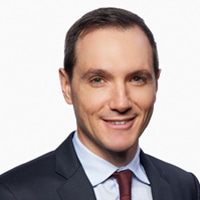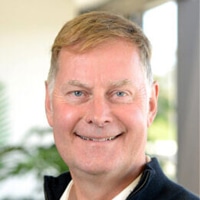In this period of rapid growth and innovation in the health sciences sector, the inaugural NSF Health Sciences Symposium provided the optimal forum to reflect on successes, opportunities, and challenges.
On 16th March, leaders from across the pharmaceutical, medical devices and dietary supplements industries connected to discuss and debate the changing regulatory landscape, supply chain disruptions, patient safety measures, and the impact of a more digital and health-conscious world. Hosted by NSF International and Life Science Integrates, the live virtual event reflected this sectors international connectivity and common interests, with attendance from across the globe. Through interactive panel discussions and intimate interviews – drawn together by experienced event host Clare Forestier – experts from across all health sciences sectors connected to share their unique perspectives.
“Today we’ll make the world a little smaller by making our networks a little bigger”
‘We are all on a mission to improve human health around the world – from dietary supplements to pharmaceuticals and medical devices’ stated Pedro Sancha, NSF, as he opened the event. He welcomed this opportunity to ‘bring together some of the best minds in the industry for dialogue regarding the important questions in this field,’ and shared his hopes that this would be the inaugural session of what will be a highly regarded annual event.

'The incredible response of players in the life sciences ecosystem'
Heather Howell, NSF, joined from the US and began by wishing all the best to former VP Martin Lush in his endurance cycling tour as he begins retirement. Heather discussed the current state of the health sciences sector, throwing back to March 2020 when the world was thrown into change by the COVID-19 pandemic. Whilst acknowledging the devastating consequences of the pandemic, she celebrated the successes born out of the need to pull together to protect public health worldwide. She highlighted NSF’s ‘successful pivot’ towards virtual platforms; and described what it was like to witness the unprecedented levels of global cooperation.

'The incredible response of players in the life sciences ecosystem'
‘Together, my team, from North America to Korea to Brazil, all started watching our governments and our industry work collectively together to find solutions to save our lives. And we were busier than ever’ she stated, explaining the efforts to produce vital products such as PPE, sanitisers, ventilators, and eventually, vaccines. Heather praised the effectiveness of virtual tools that make it easier than ever to connect both internationally and cross-sector: ‘it’s a great time to be in the world of health sciences, and today we’ll make that world a little smaller by making our networks a little bigger’.
“Biotech has come so far in the past 30 years” – the barriers and the progress
In conversation, Clare Forestier, Anders Vinther, Kronos Bio reflected on how far biotech has come in the past 30 years. He highlighted the increased capability in measurement and analysis to show ‘if a drug works, how a drug works, and why a drug works’. Combined with innovation in manufacturing technologies, this has allowed fantastic advances in treating serious diseases – ‘if you look at the top 10 selling drugs worldwide, almost none of them existed ten years ago’.

'future need for skills and knowledge'
Anders also discussed the challenges of a regulatory landscape struggling to keep up with technological advances and increasingly global business models. ‘Regulations are often set at the national level, so changes need to be approved by local health authorities in each country a product is marketed in – this can almost remove the incentive for companies to innovate.’ Using the analogy of a plane, he depicted the issue: ‘imagine you’re boarding a plane and every passenger has their own individual checklist that they have to check through before the plane can take off – despite passing hundreds of checks, the plane has to sit on the tarmac until every individual has conducted their personalised check’. He expressed the urgency for global heads of quality to come together in a more harmonised approach – ‘it’s got to the point where we will have more drug shortages if we don’t change this model. We need to find solutions, and we need to find them together.’
The regulatory landscape – “harmonisation is the key goal for now and the future”
The event saw two excellent panel discussions dedicated to the regulatory landscape. Hosted by NSF’s Oliver Christ, regulatory compliance was debated by Phil Brown, ABHI, Graeme Tunbridge, BSI, and Julian Thorns, NSF. Oliver also introduced a 4th imaginary panellist – a global manufacture of medical devices of whom the panellists adopted the mindset of. ‘There are a huge number of regulatory requirements out there that slow down improvement,’ stated Julian. ‘Harmonisation is the key goal for now and the future’ he said, explaining that harmonisation is beginning to occur, but challenges remain. Graeme expressed the challenges, saying ‘global harmonisation feels like one step forward, two steps back’, but showed optimism for the future, stating ‘the building blocks are there, we just have to make them a reality.’
Phil approached regulatory requirements from a different angle. ‘Regulation is not a box-ticking exercise, but a business process,’ he said, explaining the need to integrate regulatory requirements into the wider business strategy. The panel discussed the critical role of standards in supporting manufacturers, and in answer to Graeme’s question of whether global regulatory teams are getting bigger or smaller, Oliver proposed that teams must become ‘smarter’.
In parallel, NSF’s Lynne Byers hosted a discussion on how regulators can keep pace with change, with Karen Walker, Kyverna Therapeutics, Ian Rees, MHRA, and Kazem Kazempour, Amarex & NSF. They reflected on how the approach to regulations changed during the pandemic. Coming from a background of Car-T therapy, Karen commented that the paradigm shift in regulatory procedures seen in the pandemic has a lot to offer to ATMPs as a pathway. Ian explained the processes that MHRA is undergoing to support ATMPs and other novel medicines by forming new innovation offices to assist in these complicated fields specifically. He highlighted the need for his organisation to constantly scan the horizon for new trends to stay ahead of the curve and understand how they can provide the most help.
‘We can’t take any safety risks, but we can take business risks,’ commented Kazem, taking forward learnings from the pandemic. ‘Do as many things as you can in parallel’ he advised, explaining the benefits of executing trial activities ahead of schedule to avoid delays down the road (e.g., building EDC database at the outset instead of waiting until the protocol is complete). Wrapping up the discussion, Lynne emphasised the importance of communication between industry and regulators – ‘regulators are willing to have a discussion and be challenged’.
“Cybersecurity belongs to every facet of the organisation”
The growing challenge of cybersecurity was tackled in a panel hosted by NSF’s Heather Howell, with input from Sarah Moore, NSF, Aftin Ross, US FDA, Samantha Jacques, McLaren Health Care, and Christopher Plummer, Dartmouth-Hitchcock Health. ‘Technology is getting more and more complex, which is providing great patient outcomes but also increased instances of cyber-attacks,’ explained Heather, as she invited the panel to share practical steps from their unique perspectives within the industry.
‘Cyber-security is a patient safety issue,’ claimed Aftin, advocating for a total product life cycle approach. This idea was reiterated by both Sarah and Sam, who highlighted the length of the cyber-security life cycle. ‘If a product spends 10 years from idea to market, and is then in use for another 10 years, we could be dealing with a product that’s 20 years from its original design,’ explained Sam, making the point that manufacturers must ensure their devices can continue to be updated throughout their lifecycle.
The panel discussed the issues of ‘legacy’ devices that cannot be updated to meet the latest cyber-security needs. Aftin warned that new devices could become ‘legacy’ very quickly if they’re not designed with security in mind. Chris gave a Health Delivery Organization (HDO) perspective and shared his hopes for the future – ‘we may not see the change in our generation, but we’re laying the foundation and building incredible partnerships for the future.’
‘Cybersecurity belongs to every facet of the organisation,’ stated Sarah, ‘not just the coders, software developers, IT teams – it belongs to the whole organisation.’ She ended the session by stating the need to identify risks, take them seriously, and keep the patient central to the whole process. ‘Embrace training and empowerment of the organisation – take opportunities to learn and read so the responsibility can be collectively owned and carried by the whole company.’
On supply chains – “we’re at a further level of maturity where we look end-to-end”
Supply chains have become a common part of the vernacular in the past years, and NSF’s Lynne Byers addressed the issues with a panel of Dipti Gulati, NSF, Matthew Winterman, Roche, and Catherine Blackman, GSK. Catherine reflected on how our view of supply chains has progressed: ‘we’ve typically looked at the big risks and done well to manage them, but now we’re at a further level of maturity where we look end-to-end, looking in detail at the links that could be an issue, and using digital solutions to monitor where risks could occur.’ Matthew reiterated this idea, raising the possibility of using technology to understand what actually happens to a specific product in the supply chain, allowing a more tailored approach to risk management.
Dipti recommended taking a proactive approach to compliance risks by developing quality risk management and carrying out strategic planning – ‘constantly work on the plan and use a proactive, preventative approach.’ The panel discussed issues surrounding older products, with both Matthew and Catherine stating the need for keeping on top of the trends, plans and investment in older products. Catherine looked positively to a future involving greater statistical forecasting, data, and advanced modelling software to understand demand scenarios for more robust supply chains moving forward.
Digitalisation – “this is using technology to assist in some of the world’s biggest problems, so let’s work collaboratively to achieve this”
The challenges of an increasingly digital world were discussed by Oliver Christ, with a panel of Ronny Stoll, NSF, Euan Cameron, Cohesion Medical, and Neil Jordan, Microsoft Corporation. Although initially entitled ‘The challenges of tomorrow’, the panel all agreed that ‘tomorrow’ is already here, and the challenges of increasing digitalisation are being faced today.
The session saw an in-depth discussion of the benefits and challenges of artificial intelligence (AI). Neil challenged the controversy around the use of AI: ‘it’s not replacing humans but additive to the human aspects of healthcare – it frees up workers and allows qualities that are uniquely human to rise to the top’. The panel agreed that AI has diverse roles throughout the healthcare sector, with Neil highlighting its value in the automation of both clinical diagnostics and non-clinical processes. ‘It will help us manufacture devices,’ explained Ronny, ‘there’s a lot of AI in manufacturing, such as in post-market data gathering – it can free up the workforce from time-consuming tasks.’
Ronny advocated for changing the mindset of the regulators – ‘we need to make regulators enablers instead of controllers,’ he stated, adding that we must also increase public awareness around the safety of new technologies. In agreement, Euan praised the increased openness of communication between regulators and industry surrounding innovative spaces. ‘The key is to create a more symbiotic relationship between the regulator and all stakeholders, including the patients.’
“Health and wellness – that became the forefront of everyone’s mind throughout the pandemic”
The rapidly growing dietary supplement market was discussed in a session facilitated by NSF’s Casey Coy, with contributions from Jeffery Brams, Garden of Life, Lisa Thomas, Herbalife Nutrition, Daniel Harari, ClearCut Analytics, Len Monheit, Global Prebiotic Association, and Shelly Sapsin, Informa Markets.
Panellists discussed the immense growth of this sector over the past years. ‘Health and wellness became the forefront of everyone’s mind throughout the pandemic,’ reflected Lisa. Shelly confirmed these trends, stating that consumer data showed a 13-point reduction in satisfaction with their health, attracting them to dietary supplements.
On preferred delivery formats, Shelly explained that ‘as the market grows and reflects larger and different sectors of society, we need to keep looking at their preferences.’ Whilst pills are topping the charts in what people are taking, and there is a rise in gummies. ‘People are looking for forms that are more fun to take, and that’s driving the growth in gummies,’ explained Daniel. The panel discussed best to give consumers confidence in the safety of products. ‘Third-party certification is very important,’ explained Lisa, ‘but we need to educate the public on what certification stamps mean.’
As the industry continues to grow, future opportunities and challenges were considered. While inflation may cause a seismic shift in consumer habits towards the end of this year, Lisa drew attention to the opportunities for innovation – ‘we can have innovation not only informs, but innovative packaging, innovative pricing strategies, and innovative career development for employees.’
“A wonderful time to be in the world of health sciences”
Heather drew the day to a close by praising events such as the NSF Health Sciences Symposium: ‘if we just communicated more, we could be doing such great things so much faster.’
Both Life Science Integrates and NSF would like to thank all speakers, attendees and partners who helped to make the event such a success. Recordings from the event will be made available online to view on-demand, and we hope to see you all at the NSF Health Sciences Symposium 2023.
